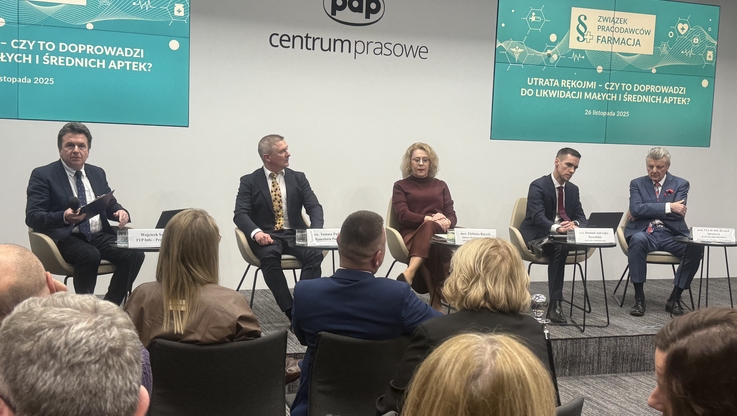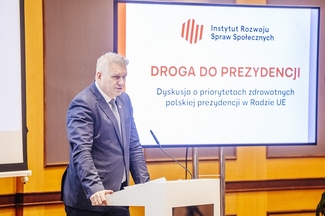Pobierz materiał i Publikuj za darmo
VALENCIA, Spain, March 21, 2011 /PRNewswire/ - On Friday 18 March the International Osteoporosis Foundation (IOF) announced the launch of OsteoLink, a new social network for people affected by osteoporosis. Through OsteoLink, the IOF will create the first global online and in-person network dedicated to improving communications about osteoporosis, a condition affecting one in three post-menopausal women and one in-five men in Europe.[1]
OsteoLink is both Online and In-Person As Numbers of "Silver Surfers"
Increase in Europe The key differentiating feature of OsteoLink is that it supports the osteoporosis community - including friends, family and health professionals - both online and with in-person group meetings. As women over 55 are being hailed as the fastest growing users of social networking, and people between 50-65 are the fastest growing age group using the internet in Europe,[2] local OsteoLink communities are designed to make it easy for people with osteoporosis to connect online and through community-based activity. In some countries, where online activity is lower, in-person activity will not only address gaps in communication but also provide tools and training, such as internet skills workshops.
"The International Osteoporosis Foundation (IOF) is proud to be at the forefront of an innovative healthcare social network that directly answers urgent unmet needs in the way people with osteoporosis and healthcare professionals communicate," said Patrice McKenney, IOF Chief Executive Officer, "By helping to encourage better communication and stronger networks of support, we hope OsteoLink will lead to better personal management of osteoporosis and to greater understanding and advocacy for this serious condition that puts so many of us at risk."
An Innovative Response to Unmet Needs in Communications and Understanding About Osteoporosis Concerns about the emotional and physical impact of this brittle bone condition are consistently underestimated by health professionals,[3] according to the results of a survey commissioned by the IOF in 12 countries in Europe and Australia. Published in the December, 2010 issue of Archives of Osteoporosis in an article entitled "The gaps between patient and physician understanding of the emotional and physical impact of osteoporosis," the survey findings suggest that:
- While people with osteoporosis fear fractures, they also report missing doses of their medication, suggesting that the link between adherence to treatment and increased fracture risk is not fully understood.[3]
- Physicians underestimate how many patients worry about breaking a bone (51% vs. 79%) as well as patient concerns about decline in activity levels (40% vs. 70%), becoming dependent on others (30% vs.60%), and not being able to work for longer (30% vs. 57%).[3]
- People with osteoporosis believe that the most credible information about osteoporosis comes from specialists (94%), they want easy to understand materials (75%) and one-in-two would welcome discussing osteoporosis with others like themselves.3
Pilot Programme and 2011 Country Launches
The OsteoLink pilot phase began at the end of 2010, from which key findings from the first programmes in select European countries are currently being assessed. Online networks and in-person meetings are now running in Austria and Sweden, available at . This year, the IOF will continue to support the development of OsteoLink in Germany and Switzerland, and expand to five new countries: Spain, Australia, Greece, Portugal and France.
"It's really exciting to think about a place where people with osteoporosis, their friends and family can come together to share information and support each other," explains Therese Holm, taskforce member and Coordinator of OsteoLink Sweden.
A Global Network, with Country-Based Communities
OsteoLink operates at a global level, with the IOF working in partnership with the Division of Bone Diseases at the Faculty of Medicine, University of Geneva to provide template content and tools that respond to current unmet needs of people with osteoporosis. These tools, along with guidance and support, are then passed along to OsteoLink country taskforces, for implementation, localisation, and the development of new content to best respond to country-specific medical needs, local language and culture. OsteoLink country taskforces are made up of IOF member National Societies, which include osteoporosis patient and professional organisations.
The OsteoLink Commitment
The IOF and its partners are committed to making OsteoLink a safe and trusted source of credible and current information. At the global level, the programme is advised by a Scientific Committee of leading osteoporosis experts from across Europe. OsteoLink protects member privacy, asking only for an e-mail address and in some cases a country name in order to register. Country taskforces ensure consistent forum moderation and information about OsteoLink members will never be used for commercial purposes or shared with any funding sponsors.
An Innovative Partnership
OsteoLink is a partnership between the IOF, the Division of Bone Diseases at the Faculty of Medicine, University of Geneva and the IOF's network of approximately 200 National Society members from 92 countries. The OsteoLink implementation team includes Syzygy, a firm specialising in online engagement strategies and Hill & Knowlton, a communications consultancy specialising in the activation of online and in-person healthcare communities.
OsteoLink is funded by grants from the EU and the Swiss Confederation through the Ambient Assisted Living (AAL) Joint Programme on research, Amgen (Europe) GmbH in collaboration with GlaxoSmithKline (GSK), Medtronic Foundation and other partners.
About Osteoporosis
Osteoporosis, in which the bones become porous and break easily, is one of the world's most common and debilitating diseases. The result is pain, loss of movement, inability to perform daily chores, and in some cases, death. Worldwide, one in three women over 50 will experience osteoporotic fractures, as will one in five men. [4],[5],[6] Osteoporosis can be prevented to a certain extent, if it can be diagnosed early and effective treatments are available. Nevertheless, osteoporosis often remains under-diagnosed and under-treated, leaving people at unnecessary risk of fractures.
About the International Osteoporosis Foundation
The International Osteoporosis Foundation (IOF) is a not-for-profit, nongovernmental organization dedicated to the worldwide fight against osteoporosis, the disease known as "the silent epidemic". IOF's members - scientific researchers, patient organisations, medical and research societies and industry representatives from around the world - share a common vision of a world without osteoporotic fractures. IOF, with headquarters in Switzerland, currently includes 194 member societies in 92 countries, regions and territories. The Foundation works with its members to advance the understanding of osteoporosis and to promote prevention, diagnosis and treatment of the disease worldwide. Among its numerous programmes and activities, IOF mobilises the global osteoporosis movement on World Osteoporosis Day every year and organises the IOF World Congress on Osteoporosis and the IOF World Wide Conference of Osteoporosis Patient Societies every two years.
References
[1] International Osteoporosis Foundation. EU policy report of 2011. Osteoporosis in the European Community: A Call to Action (2011). Accessed at http://www.iofbonehealth.org/download/osteofound/filemanager/publications/pdf/eu-report-2001.pdf on 11 March 2011
[2] European Interactive Advertising Association (EIAA), Silver Surfer's Report. (2007) http://www.eiaa.net/news/eiaa-articles-details.asp?id=138&lang=1, Accessed on 14 March 2011
[3] Rizzoli et al. The gaps between patient and physician understanding of the emotional and physical impact of osteoporosis. Archives of Osteoporosis (2010) 5: 145-153.
[4] Melton U, Chrischilles EA, Cooper C et al. How many women have osteoporosis? Journal of Bone Mineral Research (1992) 7:1005-10
[5] Kanis JA et al. Long-term risk of osteoporotic fracture in Malmo. Osteoporosis International (2000); 11:669-674
[6] Melton LJ, et al. Bone density and fracture risk in men. Journal of Bone Mineral Research (1998) 13:No 12:1915
For more information about the IOF visit http://www.iofbonehealth.org
Source: The International Osteoporosis Foundation (IOF)
Media Contacts:
Jessica Walsh
Hill & Knowlton
tel: +44(0)7827-883-888
e-mail: jessica.walsh@hillandknowlton.com
-
Tinni Guha-Roy
Hill & Knowlton
tel: +44(0)7815-051-403
e-mail: tinni.guha-roy@hillandknowlton.com
Źródło informacji: PR Newswire
Pobierz materiał i Publikuj za darmo
bezpośredni link do materiału
| Data publikacji | 31.03.2011, 20:26 |
| Źródło informacji | PAP |
| Zastrzeżenie | Za materiał opublikowany w serwisie PAP MediaRoom odpowiedzialność ponosi – z zastrzeżeniem postanowień art. 42 ust. 2 ustawy prawo prasowe – jego nadawca, wskazany każdorazowo jako „źródło informacji”. Informacje podpisane źródłem „PAP MediaRoom” są opracowywane przez dziennikarzy PAP we współpracy z firmami lub instytucjami – w ramach umów na obsługę medialną. Wszystkie materiały opublikowane w serwisie PAP MediaRoom mogą być bezpłatnie wykorzystywane przez media. |








